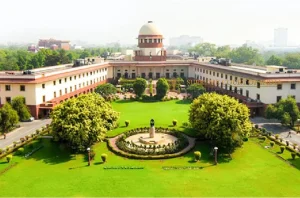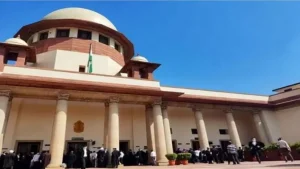

The Judiciary Should Be More Technology Oriented in This Time and Age
- /
- Articles and Blogposts /
- The Judiciary Should Be More Technology Oriented in This Time and Age
We are facing a public health crisis in India right now. With COVID-19 spreading like wildfire across the globe, the Indian government was left with no option but to bring the entire country to a standstill and lockdown to prevent a similar spread in India. The government however allowed essential services such as hospitals, grocery stores, and warehouse facilities etc. to continue to operate. In light of this, the Supreme Court and various High Courts are only hearing urgent matters. The Supreme Court is using video conferencing through Whatsapp and Skype to hear cases so as to practise social distancing and minimise the risk of being exposed to the virus. During this predicament, technology has truly helped us.
This situation is forcing us to wonder why Indian courts aren’t more tech savvy and more technology oriented. Why hasn’t the judiciary created its own digital platform for video conferencing? And why is it still relying on external vendors like Whatsapp and Skype to video conference?
When we are talking about a digital judiciary it is important to acknowledge that the judiciary has made much progress through the E-courts Mission Mode Project. From digitising case records, to management of cases on CIS, some efforts have been made to enable video conferencing in prisons and district courts. But the Phase II of E-courts mission mode project has faced time lag and implementation issues that were identified in Phase I of the project and few states failed to utilise the funds allocated.
The manner in which courts are being digitised, it is not sufficient to merely replicate existing paper based models into digital processes, it is vital to identify redundant processes and eliminate them. Simple measures like uploading daily orders is not being done, despite there being a provision for it to be made available on e-courts. Many lawyers have to make multiple trips to courts to get copies of orders. Moreover court manager and court staff are overburdened with daily court work and have to perform the work twice, first on the paper based models and later on the web portals.
Digital by default
DAKSH’s Whitepaper Series on Next Generation Justice Platform lays a foundation for envisaging a digital justice platform for the public that puts the citizen at the centre in way that the platform should be built to accommodate the needs of a citizen and automatically the rest will fall in place. This platform goes beyond the judiciary and addresses the need for seamless communication between other stakeholders like the police, prisons, and state government etc.
Benefits of going completely digital
Option of online features
The online portal will have the options of E-filing, evidence management, case information management (to the extent that every step of the cases is tracked), options of ODR and legal-aid, ability to video conference or access audio transcriptions [1]etc.
Accessibility
Having an online digital platform that caters to the needs of a litigant and a lawyer with a simple option of video conferencing can help in difficult times and circumstances. An online portal that manages the flow of a case from one stage to another from filing to submission of documents with real time access to case information benefits litigants and other stakeholders in accessing information. The litigants will be able to save travel costs of making unnecessary trips to the court. This platform will also eliminate the risk of losing case records due to fire and mismanagement.
Seamless flow of information between different stakeholders
In the current system, stakeholders like the police, prisons and state governments don’t have a mechanism that enable a constant and seamless digital flow of information between them. This platform is built to address this concern and ensure there is minimal asymmetry of information. Many under-trial prisoners awaiting bail are clueless about the progress of their cases and are at the mercy of their lawyers.
Transparent – open courts
The complex judicial process and structures are hard to navigate and could appear opaque. This platform would address these issues. Indian courts are open courts – that means any citizen can sit in a courtroom and witness the court processing with exceptions to sensitive cases. On this platform the litigant and the lawyer will have access not only to case level details but also to every submissions, applications and the history of the case with the ability to take part in the online proceedings from any location. This platform would enhance the open courts principle to the fullest extent with provisions for audio and video transcribing of live proceedings.
We need a platform that is intuitive and easy to use first and foremost by the citizens – but also by all stakeholders in the justice system. We need to seize this moment of realisation that ICT in the judiciary can go a long away towards making justice more accessible and push for a judiciary that is digital by default.
To read more about the Justice Platform visit: https://www.dakshindia.org/next-generation-justice-platform/
The views expressed in this article are solely those of the author’s and they do not represent the views of DAKSH.

Amulya Ashwathappa
RECENT ARTICLES


Lessons for Judiciary from Space Sector

The missing piece in India’s reform story—a strong tribunal system

Fast-track courts may not be the cure

-
Rule of Law ProjectRule of Law Project
-
Access to Justice SurveyAccess to Justice Survey
-
BlogBlog
-
Contact UsContact Us
-
Statistics and ReportsStatistics and Reports
© 2021 DAKSH India. All rights reserved
Powered by Oy Media Solutions
Designed by GGWP Design